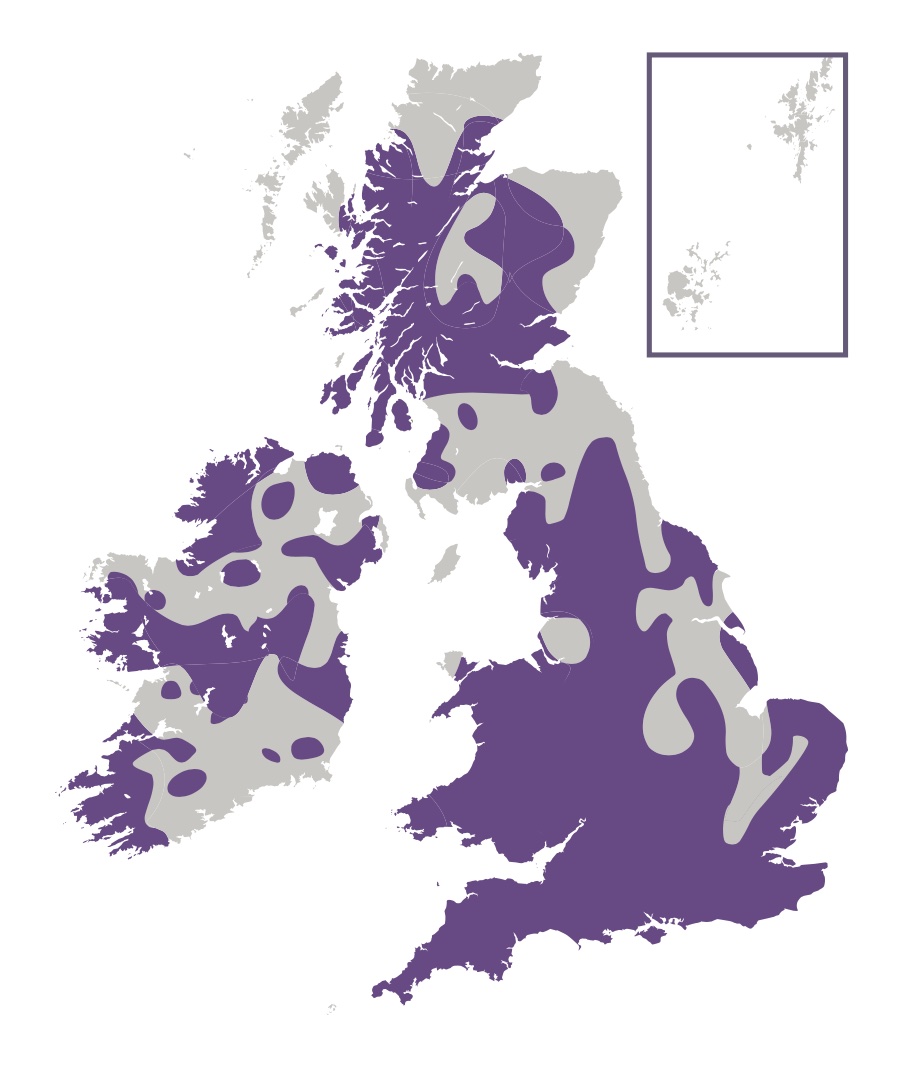
Photo © KEC
This butterfly is the most widespread of our hairstreaks. However, it is also a local species, forming distinct colonies which can be as small as a few dozen individuals, although other colonies can be much larger. Both sexes always settle with their wings closed, the brown uppersides only ever being seen in flight. The undersides, by contrast, provide the illusion of being green, an effect produced by the diffraction of light on a lattice-like structure found within the wing scales, which provides excellent camouflage as the butterfly rests on a favourite perch, such as a Hawthorn branch. This butterfly will also regulate its body temperature by tilting its wings appropriately to catch the sun's rays. This butterfly is found throughout the British Isles - partly due to the wide variety of foodplants it uses, and the wide range of habitats it frequents. However, it is absent from the Isle of Man, Outer Hebrides, Orkney and Shetland.
The male of this species is territorial and will have favourite perching sites that it uses to wait for passing females, but will dart out to investigate any passing object. The perches may be on standalone shrubs or part of a hedge and are often reused by different males should the original occupants wander too far. The female, on the other hand, spends most of her time away from the male territories, searching out nectar sources and foodplants on which to lay her eggs.

This butterfly can be found in a wide variety of habitats, including hillsides, moorland, chalk downland, heathland, railway embankments and valley bottoms. A common feature of all these habitats is the presence of scrubby plants and hedgerows.
This species has the widest range of foodplants of any British species, which includes Bilberry, Bird's-foot Trefoil, Broom, Common Rock-rose, Dogwood, Bramble and Gorse.
Adults feed primarily on Bluebell (Hyacinthoides non-scripta), Common Bird's-foot-trefoil (Lotus corniculatus), Common Rock-rose (Helianthemum nummularium), Cowslip (Primula veris), Daisy (Bellis perennis), dandelions (Taraxacum spp.), Gorse (Ulex europaeus), hawthorns (Crataegus spp.), Holly (Ilex aquifolium), Horseshoe Vetch (Hippocrepis comosa), Wild Privet (Ligustrum vulgare) and Wild Strawberry (Fragaria vesca).
The primary larval foodplants are Alder Buckthorn (Frangula alnus), Bilberry (Vaccinium myrtillus), brambles (Rubus spp.), Broom (Cytisus scoparius), Common Bird's-foot-trefoil (Lotus corniculatus), Common Rock-rose (Helianthemum nummularium), Cross-leaved Heath (Erica tetralix), Dogwood (Cornus sanguinea), Dyer's Greenweed (Genista tinctoria) and Gorse (Ulex europaeus).
